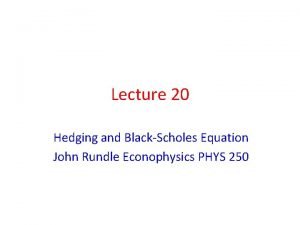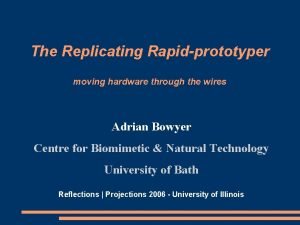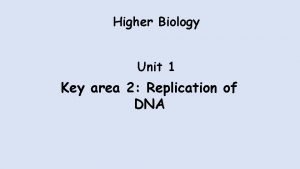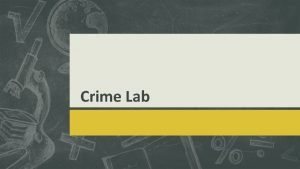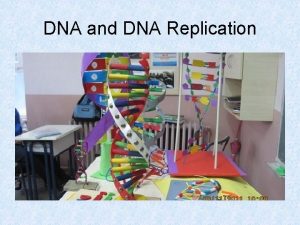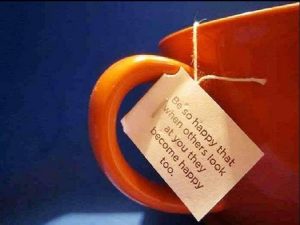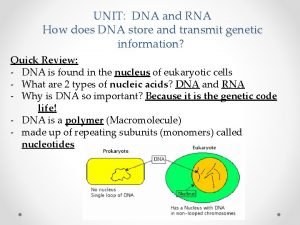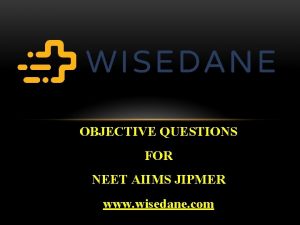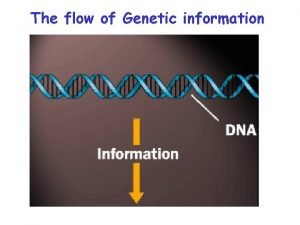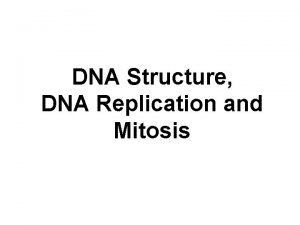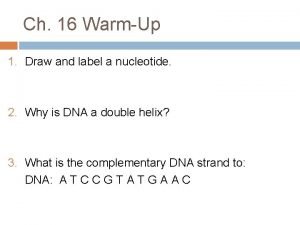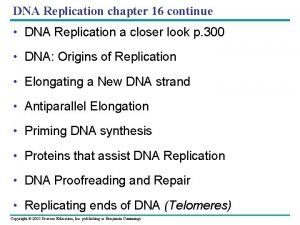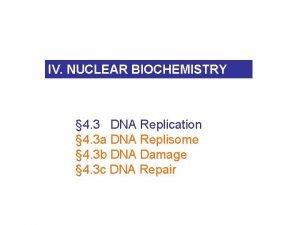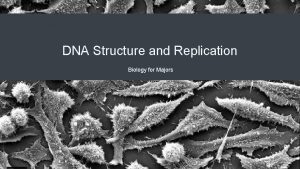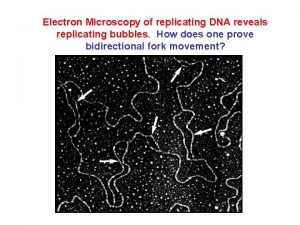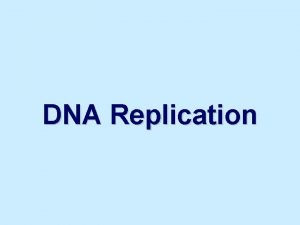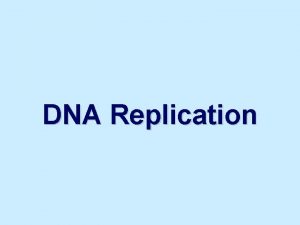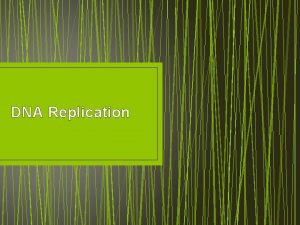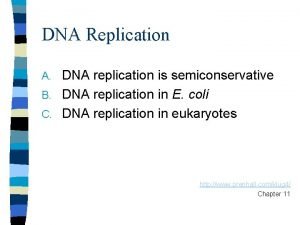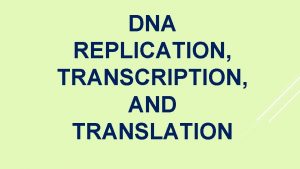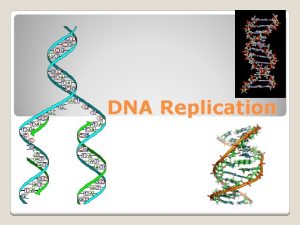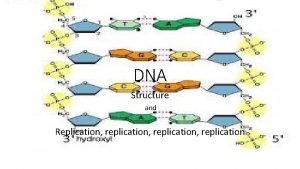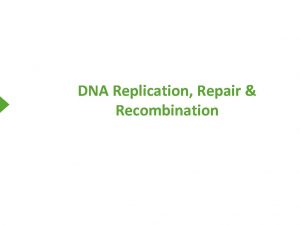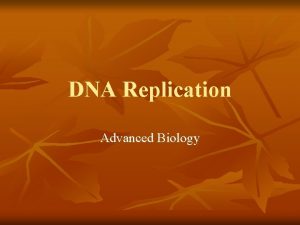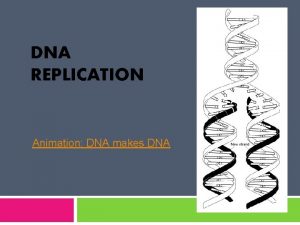DNA REPLICATION Replication DNA is a self replicating



















- Slides: 19

DNA REPLICATION


Replication �DNA is a self replicating molecule. �This means it can make copies of itself.

Replication � Process: � 1. DNA unzips (H bonds between bases break). � 2. New nucleotides bind to their complementary bases � 3. New sugar phosphate backbones form.



Replication �Importance: àWhen cells divide, they need a full set of chromosomes. àThe DNA must be copied so that when mitosis occurs, there is a copy of DNA for each daughter cell.

Replication Animation �DNA Replication 2: 15 -4: 30

Gene Mutations �Gene Mutation: any alteration in the code of a single gene or any change in its expression. �mistakes during replication or environmental factors can cause a change in the genetic code �effects may be positive or neutral but are usually NEGATIVE.

Mutations (continued) �usually changes in one or more DNA nucleotides or an alteration in the sequence of nucleotides �results in incorrect transcription and translation �resulting polypeptide may be non functioning �affects protein functioning and can have a drastic effect on the normal functioning of the body

Types of Mutations �Based on the change: Point Mutation Frame-Shift Mutation �Based on the location: Somatic Mutation Germinal Mutation

Point Mutations �Change one base pair for another �also called SUBSTITUTION mutations �Example: THE BIG DOG BIT TED AND RAN OFF. . . THE BIG DOG BIT BED AND RAN OFF. . .

Point Mutations (effects) �may have no effect GAT GAC – both code for leucine �may result in a new amino acid in the polypeptide chain CTT CAT – valine replaces glutamate (sickle cell anemia) �may result in a premature end to the polypeptide chain AGT ATT – serine replaced by STOP


Frameshift mutations � Add or delete a base; everything is shifted over � results in change to all codons after mutation � results in nonfunctional protein/enzyme due to altered codon sequence � Example (addition): � THE BIG DOG BIT TED AND RAN OFF. . . � THE BIG DOG BIT ATE DAN DRA NOF. . . � Example (deletion): � THE BIG DOG BIT TED AND RAN OFF. . . � THE BIG OGB ITT EDA NDR ANO FF. . .

Location of Mutation Somatic Germinal � In Normal body cells �in “germ”/reproductive � Not passed onto offspring cells (eggs, sperm etc) �Can be passed onto next generation

Good/Bad/Ugly? �DNA mutations are rare! Molecules check base-pair match frequently �Usually random changes are HARMFUL May be fatal Not passed on to offspring �Some changes are “SILENT” overall trait/effect is still the same. Only passed onto offspring if germinal

Good/Bad/Ugly? �Very rarely, a change might be BENEFICIAL Might give them an advantage! Only passed onto offspring if germinal

Mutagens � a mutagen is defined as any agent that causes mutations in humans � there are 2 broad categories High Energy Radiation: x-rays, gamma rays, UV light Chemical Mutagens: benzenes, dioxins, some substances in cigarette smoke
 Bioflix activity dna replication dna replication diagram
Bioflix activity dna replication dna replication diagram Replication
Replication Chapter 11 dna and genes
Chapter 11 dna and genes Ltcm wikipedia
Ltcm wikipedia Replicating rapid prototyper
Replicating rapid prototyper What is actual self example
What is actual self example Dna replication higher human biology
Dna replication higher human biology Dna replication vs pcr
Dna replication vs pcr Friedrich miescher discovery
Friedrich miescher discovery Dna replication
Dna replication Orc dna replication
Orc dna replication Dna replication phschool
Dna replication phschool Dna replication in bacteria occurs
Dna replication in bacteria occurs 3-5 exonuclease vs 5-3 exonuclease
3-5 exonuclease vs 5-3 exonuclease What is the purpose of dna replication
What is the purpose of dna replication Cell analogy restaurant
Cell analogy restaurant Bioflix dna replication
Bioflix dna replication Dna replication fork
Dna replication fork Intercalating agents
Intercalating agents Major enzymes in dna replication
Major enzymes in dna replication



